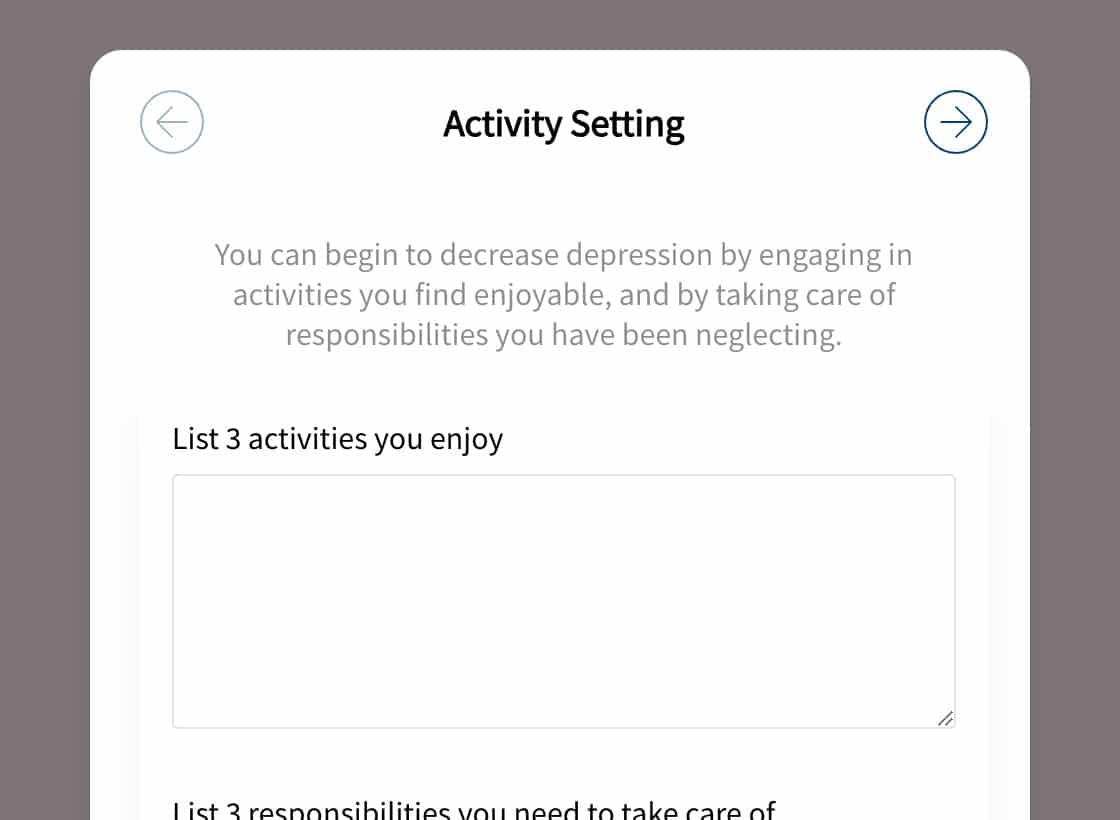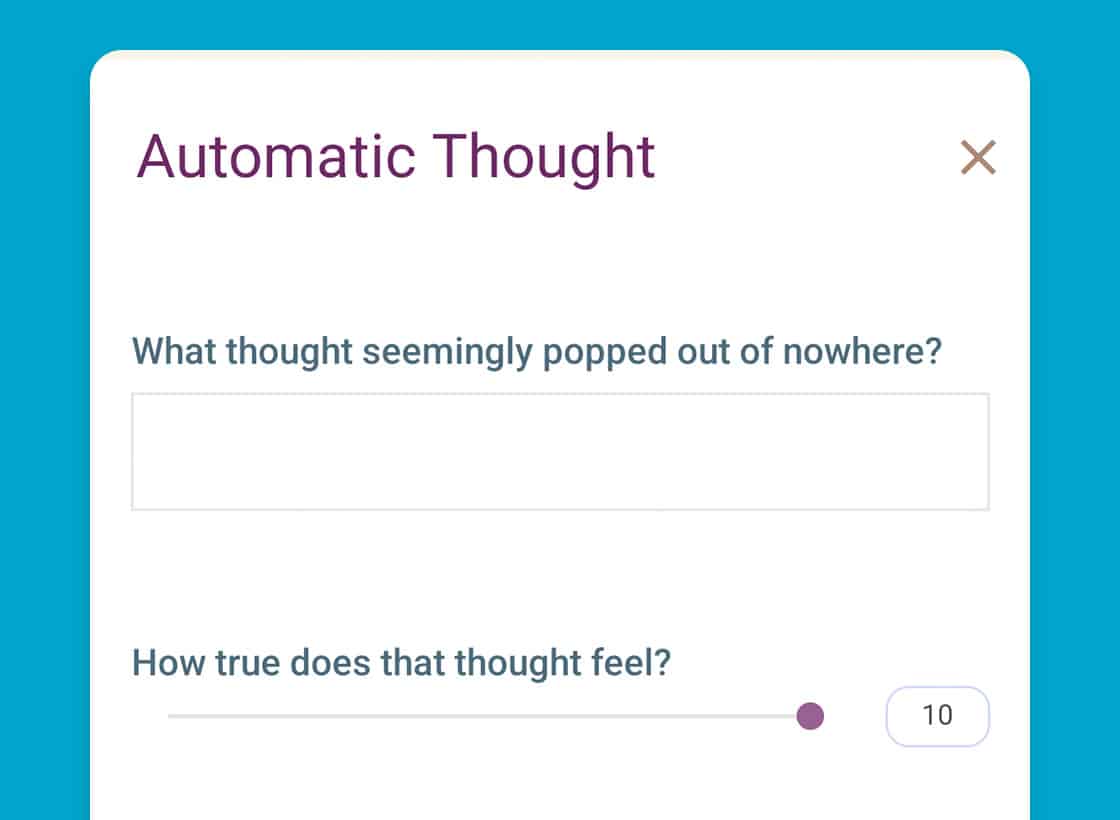Get the Behavioral Activation Assignment
Template by Reflective
Best for OCD CBT ACT
Reengage patients and clients in enjoyable activities and take action on neglected responsibilities with this Behavioral Activation worksheet. Check out the new and improved version of our Behavioral Activation worksheet, which “remembers” previous responses and makes selecting activities easier.
Use the Behavioral Activation assignment in the Reflective app
Download the printable PDF worksheet, or share the thought record worksheet with your patient with the Reflective app. Simply enter their email, and they’ll be able to fill in the thought record from the convenience of their phone. Get started for free!
How does Reflective work?
Share exercise with client via Reflective
Client receives email with app link and connection request
Client clicks link to download app
Client accepts your connection and exercises you shared
Client uses app to fill in exercises, gets reminders
What is Behavioral Activation?
Behavioral Activation (BA) is a key component of Cognitive Behavioral Therapy (CBT) that focuses on helping clients increase engagement in activities that they find enjoyable and meaningful. It is particularly effective in treating depression, where clients often experience reduced motivation and a withdrawal from previously rewarding activities. BA operates on the principle that changing behavior can lead to changes in thoughts and emotions, making it a powerful tool in the therapist’s repertoire.
Check out the new and improved version of our Behavioral Activation worksheet, which “remembers” previous responses and makes selecting activities easier.
How to Use This Exercise
Behavioral Activation exercises involve identifying and engaging in activities that can improve mood and provide a sense of accomplishment. In this version of the BA exercise, patients will fill in three activities they enjoy and three responsibilities that require their attention. They will then rate various feelings before and after completing these activities. This structured approach helps clients recognize the impact of their actions on their mood, fostering a sense of control and purpose.
Step 1: Select Behavioral Activation from the Template Library
Begin by selecting the Behavioral Activation exercise from your therapeutic tools or template library. Ensure the template includes sections for listing activities and responsibilities, along with fields for rating feelings before and after each activity. This structured format will guide the client through the process and provide clear data for discussion in subsequent sessions.
Step 2: Share with Your Patient
Share the selected Behavioral Activation exercise with your patient. Explain the purpose of the exercise, emphasizing how it can help them regain a sense of enjoyment and accomplishment. Ensure they understand that the goal is to observe how engaging in different activities affects their mood and overall mental state.
Step 3: Familiarize Yourself with the Assignment
Before asking your patient to complete the exercise, familiarize yourself with the assignment. Review the template, understand the rating scales for feelings, and consider any specific instructions or modifications that might be necessary for your particular client. Being well-prepared will allow you to provide better guidance and support during the exercise.
Activity Setting
Work with the client to enter three activities they enjoy, and three responsibilities that require their attention.
Pre- and Post-Activity
Your client should fill in which activity they performed, and then select, on a scale of one to ten, how they felt before they performed the activity, and after the activity.
They’ll select
Step 4: Repeat as Needed
Behavioral Activation is not a one-time assignment. Encourage your patient to repeat the exercise regularly, such as weekly or bi-weekly, depending on their progress and needs. Repetition allows for the identification of patterns and the gradual reintroduction of more activities into their routine. Regularly reviewing the results together can help reinforce positive changes and address any challenges that arise.
Incorporating Behavioral Activation into your practice can significantly enhance your therapeutic outcomes, providing clients with a practical and effective tool to combat depression and other mood disorders. By guiding your clients through this structured exercise, you help them rediscover the joy and satisfaction that comes from meaningful engagement in life.



